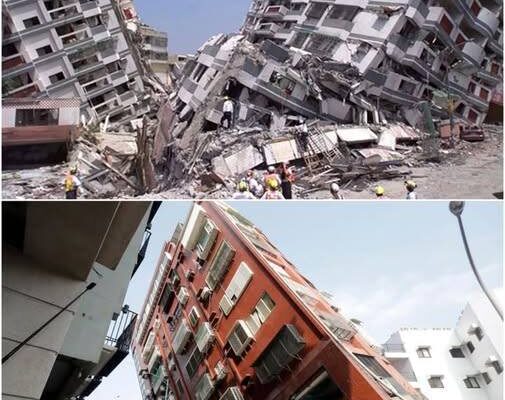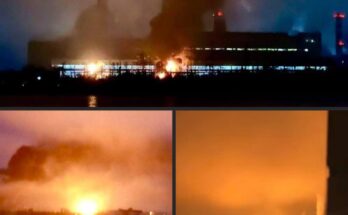A powerful 6.3-magnitude earthquake rocked Colombia late Tuesday morning, leaving behind a trail of devastation and heartbreak. The quake, which struck at approximately 10:47 AM local time, had its epicenter located roughly 80 kilometers southeast of Bogotá near the city of Villavicencio. Tremors, however, were felt across a vast region, reaching as far as Medellín and Cali, triggering mass panic and urgent evacuations.
The violent shaking lasted for nearly 45 seconds, an eternity for those caught in its grip. In Bogotá, the most dramatic and tragic damage occurred when a multi-story red-brick apartment complex partially collapsed. The structure now leans dangerously against an adjacent building, a haunting reminder of nature’s raw power. From the ground, debris is scattered across the street below — snapped steel reinforcements, shattered balconies, and fragments of brickwork creating a chaotic, almost apocalyptic scene.
Emergency services have confirmed multiple fatalities so far, though exact numbers are still emerging. Dozens have been reported injured, and many residents remain trapped beneath the heavy rubble. Search and rescue teams, firefighters, paramedics, and volunteers are working around the clock, using heavy machinery and specialized equipment to navigate the unstable wreckage. The risk of further collapse looms over every operation, yet crews continue their efforts undeterred, driven by the possibility of finding survivors.
Heart-wrenching images and videos from the scene show the building’s twisted metal, cracked walls, and precariously hanging air conditioning units. Families wait on the sidewalks, wrapped in blankets, watching rescue efforts with tearful eyes and clasped hands. Many have been left homeless, clutching only a few salvaged belongings, while others desperately search for missing loved ones, calling their names into the dust-filled air.

Across Bogotá and beyond, the quake triggered widespread evacuations. Schools, offices, hospitals, and residential buildings emptied as terrified occupants fled into the streets, seeking safety from falling glass and crumbling facades. In some areas, power outages and disrupted communications have further complicated rescue and recovery efforts.
Authorities have issued urgent warnings for residents to stay away from damaged structures and avoid the hardest-hit areas, both for their own safety and to allow rescue workers unhindered access. The risk of powerful aftershocks remains high, and officials have stressed the importance of remaining vigilant in the coming hours and days.
In Villavicencio, closer to the quake’s epicenter, reports indicate damage to roads, bridges, and smaller residential buildings. Rural communities, often more vulnerable due to weaker infrastructure, have also suffered severe impacts, though details are still being gathered.
Colombian President Gustavo Petro expressed condolences to the victims and promised immediate federal support for rescue and relief efforts. “We stand with every family affected by this tragedy,” he stated during a televised address, pledging additional resources, medical aid, and temporary shelters for those displaced.
Psychologists and crisis counselors have also been dispatched to help survivors cope with the trauma of sudden loss and the ongoing uncertainty. Meanwhile, community centers and churches have opened their doors, providing food, blankets, and emotional support to families in need.
As rescue operations continue, the country holds its breath, praying for more miracles amid the rubble. The full scale of this disaster is still unfolding, and it will take days — if not weeks — to assess the complete extent of the damage and begin the long path to recovery.
This is a developing story. More updates will be provided as new information becomes available. In the meantime, officials urge the public to follow safety advisories closely and support relief efforts in any way possible.



